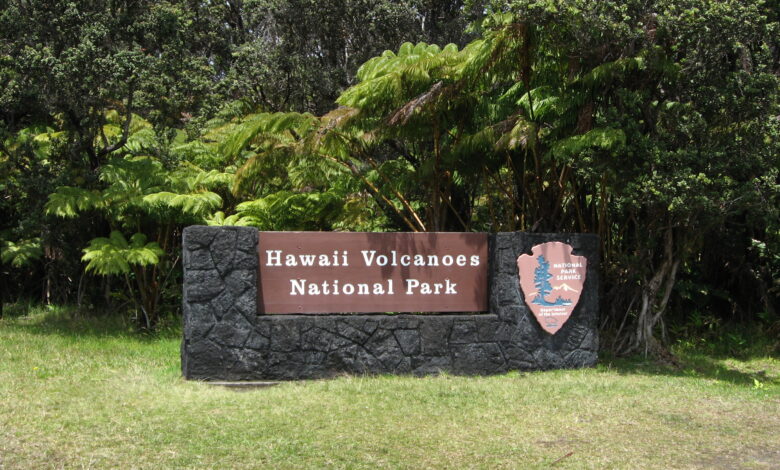Discovering the Wonders of Hawaii Volcanoes National Park

Hawaii Volcanoes National Park is a treasure trove of natural beauty and geological wonders located on the Big Island of Hawaii.
Established in 1916, this park is home to two of the world’s most active volcanoes: Kilauea and Mauna Loa.
With its diverse ecosystems, stunning landscapes, and rich cultural history, the park offers visitors an unforgettable experience. Let’s dive deeper into what makes this park a must-visit destination.
A Glimpse into Hawaii Volcanoes National Park
Park Overview
- Established: August 1, 1916
- Size: 323,431 acres (505 square miles)
- Annual Visitors: Approximately 2 million
- Entrance Fees: $30 per vehicle; $15 per individual
- Visitor Centers: Kilauea Visitor Center is open daily from 9 a.m. to 5 p.m.
Hawaii Volcanoes National Park is not just a place to witness volcanic activity; it’s a living laboratory where you can see the forces of nature at work.
From the lush rainforests to the stark lava fields, the park’s landscapes are as varied as they are breathtaking.
The Volcanoes: Nature’s Powerhouses
Kilauea: The Most Active Volcano on Earth
Kilauea is renowned for its frequent eruptions and is considered one of the most active volcanoes globally.
Its most recent eruption began in September 2021, following a series of dramatic events in 2018 that reshaped the landscape and impacted local communities.
Key Features:
Halema‘uma‘u Crater: The volcano’s most active vent, known for its lava lake and explosive eruptions.
Recent Eruptions: The 2018 eruption caused significant damage, destroying homes and creating new land as lava flowed into the ocean.
Also Read: Discovering Amboseli National Park
Mauna Loa: The Giant of Volcanoes
Mauna Loa, towering at 13,681 feet above sea level, is the largest volcano on Earth when measured from its base on the ocean floor. This shield volcano is known for its gentle slopes and massive volume.
Key Features:
Historic Eruptions: Since its first documented eruption in 1843, Mauna Loa has erupted over 30 times, with the most recent eruption occurring in 2022.
Unique Landscape: The summit caldera is approximately 2 by 3 miles in diameter and 600 feet deep, offering stunning views and a sense of scale that is hard to comprehend.
Unmissable Experiences in the Park
Scenic Drives and Hiking Trails
The park features several scenic drives and hiking trails that allow visitors to explore its diverse landscapes.
Crater Rim Drive: A scenic route around the summit of Kilauea, providing breathtaking views of the caldera and surrounding areas.
Chain of Craters Road: This 20-mile road meanders through various volcanic formations, leading to the ocean where lava meets the sea.
Key stops include:
Kealakomo Overlook: Offers panoramic views of the coastline.
Pu‘u Loa Petroglyphs: A site with over 23,000 ancient Hawaiian petroglyphs.
Kau Desert Trail: A rugged 18-mile hike through the volcanic terrain, leading to stunning vistas and unique geological features.
Unique Wildlife and Flora
The park is home to diverse ecosystems, including rainforests, deserts, and coastal areas.
Visitors can encounter:
- Endangered Species: Several rare birds and plants that are unique to Hawaii.
- Diverse Vegetation: From lush ferns in the rainforests to hardy plants in the volcanic landscapes.
Cultural Significance
Hawaii Volcanoes National Park is not only a geological wonder but also a place of deep cultural significance.
The park is steeped in Hawaiian mythology and history, with many sites linked to ancient traditions.
- Cultural Sites: The park features significant archaeological sites that showcase the history of the Hawaiian people and their connection to the land.
Also Read: Rift Valley Lakes From Naivasha to Nakuru
Where to Stay and What to Bring
Accommodations
- Volcano House: This historic hotel located on the rim of Kilauea caldera offers stunning views and a unique experience.
- Camping: There are two campgrounds within the park: Namakanipaio and Kulanaokuaiki, both offering rustic camping experiences.
What to Bring
- Essentials: Water, snacks, sunscreen, and sturdy footwear are crucial for exploring the park.
- Camera: Capture the stunning landscapes and unique geological features.
Planning Your Visit (Best Time to Visit)
While the park is open year-round, the best time to visit is during the dry season from April to October. However, each season offers a unique perspective on the park’s beauty.
Safety Tips
- Stay Informed: Check for current volcanic activity and park alerts before your visit.
- Respect Nature: Stay on marked trails and follow park regulations to protect the delicate ecosystems.
Conclusion
Hawaii Volcanoes National Park is a captivating destination that offers a unique blend of natural beauty, geological wonders, and rich cultural heritage.
Whether you’re hiking through lava fields, witnessing the power of erupting volcanoes, or simply soaking in the breathtaking views, this park is sure to leave a lasting impression.
So pack your bags, grab your camera, and get ready for an adventure like no other!
By exploring Hawaii Volcanoes National Park, you’ll not only witness the incredible power of nature but also gain a deeper appreciation for the cultural significance of this stunning landscape.
Don’t miss out on this unique opportunity to connect with the earth’s raw beauty!





